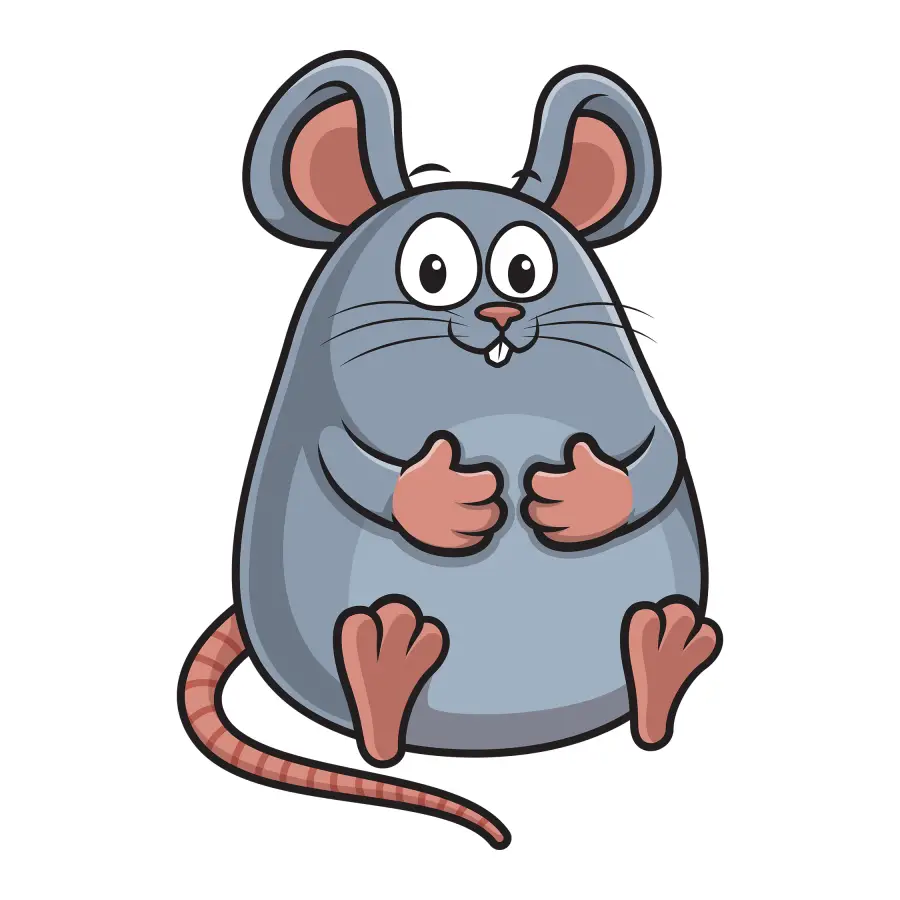You’ve tended to your strawberry patch diligently for several months and everything is looking to be right on track. That is until one morning you realize something that makes your heart leap out of your throat…someone (or something) has been messing with your precious crop!
There are many animals that will attempt to eat strawberries in your yard. Many birds, rodents, insects, snails, slugs, deer, raccoons, and rabbits could be tempted by unprotected strawberry plants. The first step in saving your strawberries is to identify the threats.
Join us as we help you to sleuth out the potential suspects behind this threat. Birds? Rodents? Bugs? Just what exactly is chowing down on your strawberries?

Contents
What Animals Are Eating My Strawberries?
Everybody loves strawberries. Heck, everybody loves strawberry-flavored stuff, and understandably so. It makes the perfect blend of sweet and sour at the same time.
Unfortunately, people are not the only ones who love the fruity delight, and the sweet aroma of ripening strawberries may prove too irresistible for potential thieves. I am not talking about your human neighbors, but your neighbors of the animal variety.
To be fair, they don’t see dipping into your stash of the delicious desert fruit as stealing. They may not be able to show actual human emotions, but when they see the delectable berries just sitting in the open, their low stress levels and satisfaction sure could come close to joy.
You see, many critters, big and small, regard strawberries as a delicacy and will seize the slightest opportunity to invade your property and help themselves. What kind of critters, you ask? Let’s take a look.
If you are looking to start some hearty strawberry plants of your own, I recommend these root starter plants you can order directly from Amazon: 10 Eversweet Everbearing Strawberries Plants Zone 4-9
Birds
The worst threat to your crop will probably come from the skies, especially if you are not growing your strawberries in a greenhouse. Not many of use have our own greenhouses in our yards or even on extended property. So, mostly you will be dealing with dive bombers attacking from above without much recourse.
Various fruit-loving bird species will regard your strawberry patch as an all-you-can-eat buffet.
Sparrows Could Be Eating Your Strawberries
Sparrows are the most common menace in this regard, and they show no mercy as they wastefully peck and nibble at several strawberries at a time. It would be much better if the birds could somehow just focus on consuming one strawberry at a time. But that would be too convenient.
The problem with the peck-and-skip feeding method of sparrows and most other fruit birds is that it opens each strawberry up and makes it highly vulnerable to premature rot. One sparrow can easily nibble 10-20 strawberries in one afternoon, so you can imagine the kind of damage a whole flock could do.
Case in point: My wife loved to grow small strawberry plants in pots on our porch years ago. For most of the germination and growth periods, there would be no sign of the pesky sparrows. Yet, as soon as the strawberries were just about ripe, the swarm would appear as if out of thin air. She tried many time to shield them with different tactics to no avail. Every time we would estimate about a week was left, the sparrows would descend.
Finches Could Be Eating Your Strawberries
Another bird species to worry about is the finch, which employs the same dining strategy as sparrows. These are those adorable tiny birds that flutter about in the spring dodging the bigger birds.
They can even get through types of fencing and netting that sparrows and other birds cannot. Their small size doesn’t mean they can’t ruin as many strawberries as sparrows though. They employ the same tactics, jumping from one strawberry to another nibbling on all of them.
Robins Could Be Eating Your Strawberries
Robins also love strawberries. The major difference between them and the two aforementioned species is that they will eat strawberries WHOLE. So, if you’ve decided to grow strawberries in spring or summer, and a flock of robins just happens to descend on your field, you’re in trouble.
Though at times robins can be seen staking out trees and living the loner life, during migration they form loose flocks for protection and food location. If a migrating flock of robins spot your unprotected strawberries, you can kiss them goodbye.
Crows Will Sometimes Eat Strawberries
Many other bird species will partake in strawberries to varying extents. Crows and grackles, for example, are known to nibble on strawberries from time to time.
Crows are massive birds and it may be easier to keep them off of your strawberries than others with the right types of meshes or wire. They are rather strong and tenacious birds, but strawberries are not part of their normal food sources. So, if you are having a problem with crows, you could have more luck keeping them away.
Starlings: The Menace Of The Starling Flocks
However, the most devastating bird species to strawberry farmers should look out for is the starling. The problem with starlings is that they peck-and-skip and eat whole strawberries. The worst part? They move in flocks that could eradicate an entire strawberry patch in a matter of hours.
To see some more great articles on LawncareGrandpa.com…
- Watering Plant Leaves Benefits: Mist Em, Spray Em, Soak Em
- Can You Grow Plants In Glass? – (Jars, Containers, Bottles)
- Are There Male And Female Bananas? (Surprising Answer)
Rodents

While the aerial threat of birds is always a major concern, you cannot afford to neglect the ground assault from a classic family of pests…rodents.
That’s right, numerous rodent species love nothing more than to bite down on your sweet juicy strawberries. Additionally, rodents also attack strawberry plants, which is even more annoying.
Rats And Mice Can Eat Strawberries
Rats and mice will most likely be your biggest concern. Rats are more prevalent in cities and towns, so strawberry garden beds are particularly vulnerable. Mice tend to stay out in the country, which makes them a problem for farms and rural homesteads. However, there is no ironclad rule over this, meaning you could get rats on a farm or mice in a suburban garden.
Squirrels Will Sometimes Snack On Strawberries
Backyard gardeners also need to worry about one rodent that is not always considered a pest.
Yep, we’re talking about squirrels. While they are famed for their love of nuts, squirrels also balance out their diet with an assortment of fruits, including strawberries. Luckily, their relatively low numbers make them less of a threat than rats, for example. However, even a pair of squirrels can severely impact a small strawberry patch.
Burrowing Rodents
Next up we have the tunneling rodents. These include moles, gophers, and chipmunks. These rodents can set up camp anywhere, but they are more likely to live out in the country so they can burrow in peace. Like most other rodents, they have varied diets which range from earthworms to fruit.
Most rodents are more likely to attack organically grown strawberry plants due to the unfumigated soils. Organic soils allow soil decomposers like earthworms to thrive, which then attracts rodents.
Your strawberries are also at risk if your garden or field is close to a highly weeded area. Burrowing rodents love to establish their homes underneath dense brush and shrubs to protect themselves from predators.
Insects
Insects are arguably the biggest threat to strawberries, especially on a commercial scale. There are simply too many insect species that are potential pests for strawberries. Here are a couple of common ones.
Weevils
For starters, you have weevils, particularly the strawberry bud weevil. This insect lays its eggs in developing buds, which stunts the development of berries. The resultant larvae then feed on the still unformed seeds, which leads to deformed strawberries.
Spittlebugs
Leafhopper nymphs, also referred to as “spittlebugs”, are another problem for strawberry growers. They attack a developing plant’s stem to access sap. If a plant is overrun by spittlebugs, it won’t grow as quickly as it should and it may develop stunted fruit, if at all. A tell-tale sign of spittlebug infestation is the formation of a foamy substance at the base of plants.
Snails and slugs
Mollusks like snails and slugs are another silent killer of your strawberry-flavored dreams.
Although snails and slugs move very slowly, they reproduce pretty quickly and you can be easily overrun if you don’t take action.
These critters love strawberries and will form tiny holes in them to extract the juices. Like with peck-and-skip birds, this feeding strategy will leave your fruits highly susceptible to premature decay.
The classic sign of a snail and slug invasion is thin wisps of silvery slime. If you notice these in your garden or field, you know you have mollusks on your hands.
Raccoons
Is it really surprising that the bane of the neighborhood will also steal your berries? Probably not.
In addition to rummaging through your trash, and possibly traumatizing a family pet, raccoons also don’t mind partaking in your sweet fruity delights.
Raccoons are typically active at night, and if your berries are grown freely outside, you could be in trouble. They are also fairly dangerous to dogs and cats. So, approaching them is not a good idea. Attempt prevention rather than capture unless you are experienced with traps.
If you live in an area with raccoons (aka pretty much anywhere in North America) and find missing berries in the morning, you already have a primary suspect.
Deer
As herbivores, deer will munch on a wide number of plant leaves and fruits. The same goes for strawberries and strawberry plants.
If you fail to erect a sizeable barrier around your strawberries, prepare for disaster.
Rabbits
Rabbits also love nibbling on strawberry leaves and they have a penchant for the sweeter things in life, which can manifest itself as a full-on assault on your precious berries.
Like with deer, lack of a fence or a similar barrier could cost you dearly.
The Final Touches On What Could Be Eating Your Strawberries…
There you have it. This is of course not a comprehensive list, but a fairly detailed one to point you to the major culprits that could be responsible for your lost strawberry crop.
Hopefully you can figure out a way to protect your delicious berries against some of these wily critters.
More articles you will like here…
- Walk-Behind Sprayer: What Is A Push Sprayer Used For?
- Japanese Maple Syrup? Is There Syrup From Japanese Maples?
- PEX Irrigation System: Can You Bury PEX For Lawn Sprinklers?
References
https://homeguides.sfgate.com/type-animal-eat-strawberries-garden-104739.html
https://www.thespruce.com/organically-control-strawberry-insect-pests-2539824

